Growing food and raising meats is becoming much more difficult for producers around the world. Between radical changing weather patterns and disease, we are seeing more crop loss and livestock deaths than ever before. The numbers are HUGE because we have HUGE populations to feed. These populations are only growing.
For many preppers and homesteaders growing and making our own food is just part of everyday life. It’s incredibly freeing and introduces a new kind of freedom into your life. At the Prepper Broadcasting Network, we call it: Self Reliance and Independence. It’s the key to a good life.
Cooking at home can be as much about survival and prepping as it can be about tonight’s dinner. Some foods you can make and forget because they have such a great shelf life. I have compiled 6 recipes for survival food to make and forget.
Give ‘em all a try but especially the peasant bread if you don’t think you have what it takes to make delicious fresh bread at home.
Related: How to Make Spam
Virginia Ham
The preservation of ham is one of those skills that all preppers should at least understand. If it’s not something you have already done. It’s a very simple process but it takes a lot of time and some timing of the seasons.
Ingredients
- 1 Pork Picnic
- 1 LB of Salt
- 1 Cup of Whisky
Directions
- In most climates, you are going to want to start this process around September at the earliest.
- In a large container or a large unscented trash bag place your pork and cover it completely with your salt.
- Keep this in the refrigerator for 30 days. You may need to add more salt to the pork as the month goes on to keep it covered.
- After a month you are going to wipe the salt of the curing pork and then pour the whiskey over top. Now wrap it up in a few layers of cheesecloth, a large kitchen towel or a chef jacket. You are going to hang this for the next 6 months in an area that is covered from the sun and has some decent airflow.
- Therefore, it’s important to time things just right. You do not wanna be hanging a ham through the summer.
- Unwrap your ham after 3 months to check the ham out. You might need to cut some mold off the ham. Wrap it again and let hang for another 3 months.
Estimated Shelf Life: 5 years if left wrapped and uncut.
⇒ Click Here To Learn How To Can Hamburger Meat For Long Term Preservation
Kimchi
This spicy fermented cabbage mixture is both a tasty and spicy treat but also an outstanding probiotic food for your gut health.
In the Korean tradition, kimchi would be stored in covered earthenware pots underground and allowed to ferment for decades! Kim Chi is easy to make though you will do things that are counterintuitive to practical cooking methods.
It’s all part of the fermentation process.
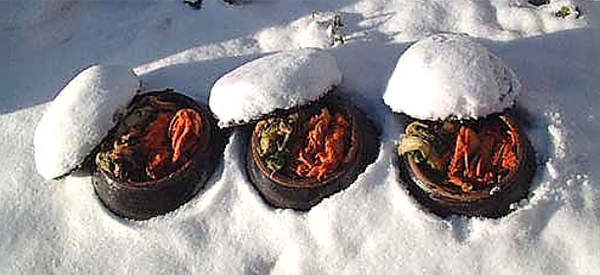
Ingredients
- 1 head of Napa Cabbage
- 5 Cloves of Garlic
- 1 Heaping TBSP of Korean Ground Chili
- 2 TBSP of Soy Sauce
- 1 Large Thumb Sized Piece of Ginger
Directions
- Start by mincing your garlic and ginger.
- Next, you are going to cut the core out of your cabbage and slice it in half. Slice the halves, starting at the top, in quarter-inch slices.
- Place the cabbage into a colander and salt it heavily. Toss the cabbage to incorporate the salt and then allow this to sit and drain overnight.
- The next day you are going to rinse your cabbage and add it to a big bowl Add the rest of the ingredients and mix thoroughly. Place this mix in mason jars with the lid just lightly screwed on. Allow this mix to ferment for 4 days in the dark pantry.
- You can store it in the fridge after this and leave it to ferment for as long as you like.
- If we experience an off-grid situation you would need only remove these from the fridge and bury them underground.
Estimated Shelf Life: Indefinitely.
Fruit Leather
Dehydration is a big part of food preservation for preppers. The ability to pull moisture from food removes one of the most important elements of bacterial growth. That is why dehydration works so well. Here you can find 50 foods you can dehydrate at home.
Fruit leather is a great way to use up lots of fruit and create amazing food that will last on the shelves until you need it most. Fruit leather is also a great addition to several other recipes like granola and fruit bars.
Making fruit leather is a pretty simple process and if you have some fruit and sugar you can get there.
Ingredients
I like ratios and I would rather people remember ratios than any recipe. If you understand ratios than you can recreate things easily. In this case, we are talking about the fruit to sugar ration.
- 2 Parts Fruit: 1 Part Sugar
- 4 cups of strawberries
- 2 cups of sugar
Directions
- Preheat the oven to 180 degrees.
- In a large saucepot place your ingredients. Simmer until you can smash the fruit and sugar into a smooth puree.
- Using a tablespoon, smooth some of the purees out onto a sheet pan that is lined with good wax paper or a Silpat.
- Cook that puree in the oven for about 6-7 hours until it is completely dry.
- Let it cool and cut the fruit puree in the shape you would like to.
Estimated Shelf Life: 4 years.
Related: How to Grow Fruit All Year Round
Biltong
This is a South African meat preservation method that focuses on the use of vinegar. The word Biltong is Greek and means bed bug!
That is because the coriander seeds, a necessary ingredient, resembled little bed bugs.
Ingredients
- 5 LBS of Lean Meat
- 5 TBSP of Malt or Cider Vinegar
- 3 TSP of Coarse Salt
- 2 TSP of Black Pepper
- 2 TBSP of Coriander Seeds
Directions
- Start by toasting your coriander seeds to bring them back to life. In a spice grinder or mortar and pestle bash them up a bit. You can even add the vinegar to this.
- Slice your meat against the grain into 1-inch pieces and place it in a non-reactive container.
- Now dump the rest of the ingredients over top of the meat and allow that mix to sit in the fridge for at least 12 hours. 24 hours wouldn’t hurt.
- Remove the meat from the container and gently pat it dry on a plate. Be careful not to remove all the pepper and coriander.
- Next, you are going to hang this meat, most likely in your fridge with some twine between racks. If you get a few days of cool temperatures, you could hang it outside, but you are gonna want to cover it with cheesecloth to avoid bug infestation. Fridge works great.
- Check it every few days. You want the entire piece of meat to be hard. If it has some give or feels mushy at the center than you are going to have raw meat inside. Let it cure for a few more days.
Estimated Shelf Life: Approximately 10 years.
Related: How To Pickle Meat
Peasant Bread
If you have read my articles in the past you know that I put an extreme focus on being able to cook from scratch.
In the prepper community, it doesn’t hold the weight of things like tactical training or communications, but it is a responsibility that someone will need to inherent in an SHTF situation 3 times/365 days a year.
This is the easiest method for making bread dough and should be part of any homesteader or prepper’s recipe book.
Ingredients
- 4 Cups of Flour
- 2 TSP of Salt
- 2 TSP of Sugar
- 2 Packets of Dry Yeast
- 2 Cups of Warm Water
Directions
- Start in a large metal bowl with all your dry ingredients. Mix them thoroughly before adding your warm water. Mix this all together to create a sticky ball of dough.
- Cover the bowl with a damp towel and in about an hour your dough will have doubled in size.
- Beat the dough down with the spatula and it will deflate.
- Now transfer it to your baking vessel, most people use an oven-safe glass or ceramic bowl. Allow this mix to rise to the rim of the bowl before baking for about 20 minutes in a 375-degree oven. The top should be golden brown and delicious.
Estimated Shelf Life: Approximately 3 years.
Pilot Crackers
When you read about something called two pilot crackers you probably think two things:
1. They were made for pilots.
2. They are basically flavorless crackers.
The funny thing about pilot crackers is that they were actually created for seagoing by a man named John Pearson in 1792. The recipe is Nabisco’s oldest!
If you like crackers, you will find the pilot cracker to be a great vehicle for spreads and even preserved meats. The recipe is incredibly simple, and you can expand it easily to make a lot of these crackers at one time.
Ingredients
- 2 Cups of Flour
- ¾ of a Cup of Water
- 1 Tablespoon of Lard
- ½ Teaspoon of Salt
Directions
- Mix all the ingredients in a bowl until thoroughly incorporated. This can be done in a mixer or by hand.
- Rest the dough in the fridge for about 10 minutes to allow the lard to harden up again.
- Roll the dough out to about ¼ inch and use a circle mold or a small cup to punch crackers out at the desired size.
- Bake them for 15 minutes in a 400-degree oven and allow them to cool completely before trying to remove them.
Estimated Shelf Life: Indefinitely.
TIP: You can store them in with oxygen absorbers in mylar bags for even more extended storage.
Of the making of many survival foods, there is no end! These are 6 great foods to learn how to make and to store for the long term.
These foods focus on several important cooking methods like dough making, curing, dehydrating and baking.
If you can stack your pantry with food that you can make and forget you will undoubtedly be prepared for the next disaster. However, if you can master the processes then you will be able to eat for a long time.
Things like the biltong could be made with beef or with venison that you hunted.
Your stored wheat could be used to make these crackers or peasant bread.
Try your hand at the recipes above and let us know in the comments below how things turned out!
Editor’s note: All the storage methods are basic, but if Oxygen absorbers & Mylar bags are used, all the foods would last indefinitely.
You may also like:
 Why You Should Put A Silver Coin In Water
Why You Should Put A Silver Coin In Water
The Long-Lasting Food That Amish Pioneers Turned To In Dark Times (Video)
How to Build a 44-Day Stockpile for Only $2.40 a Day

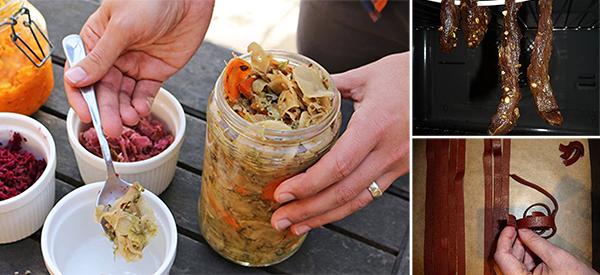
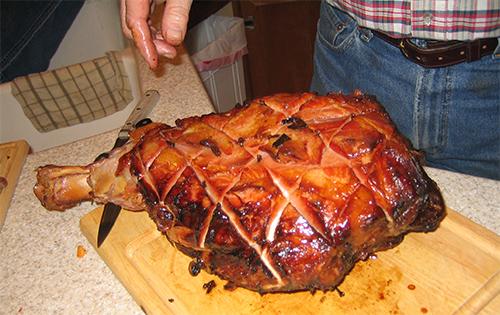
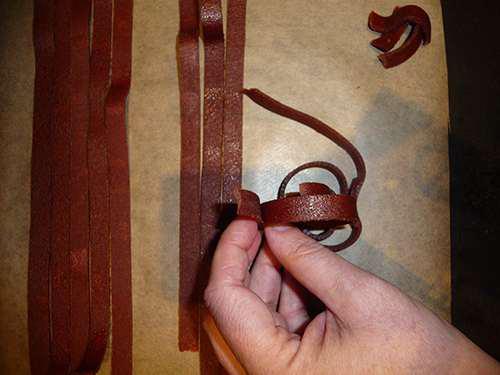
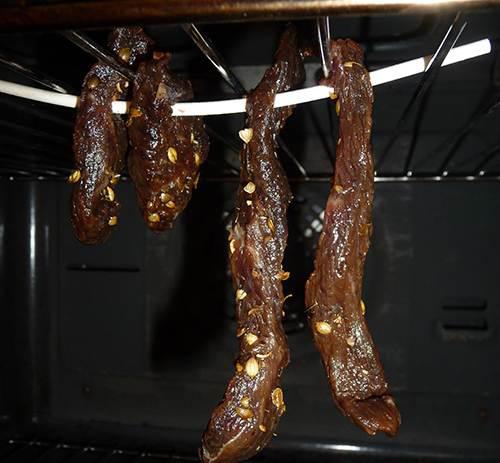















Love this article! I plan to try all the recipes. Today I will make fruit leather, to start.
I really enjoyed this article and learned some useful information. Regarding your bread recipe, I am wondering if you are familiar with “Artisan Bread in 5 Minutes a Day”? I use this recipe on a weekly basis to feed my family. I love it for its simplicity, requiring few ingredients, and diminished prep time.
Can you share that bread recipe please?
I believe Norcode may be referring to an article from Mother Earth News that eventually became a book.
Here is a link to the article (and recipe):
https://www.motherearthnews.com/real-food/five-minutes-a-day-for-fresh-baked-bread-zmaz08djzgoe
Thanks for linking the article with the recipe. I am not reading/replying to email on a daily basis.
Some personal observations on the MEN recipe:
If one makes the large recipe calling for 13 cups (US) of flour you will notice that nearly an entire 5lb bag of flour is used. To limit the inconvenience of storing nearly empty bags of flour (’til next batch) I use the entire 5 lbs
and increased the ingredients to: water 6.5 cups, 3.5 T Kosher salt, 3.5 T active dry yeast. You may find that 6.5 cups of water is too much or too little depending on your preference. I have found that less than 6.5 cups is too dry and 7 cups is too wet for my liking. I mix, raise, and store the dough in a sealable, 2.5 gal plastic container. You may want to downsize you container as the dough is used as unwanted condensate forms during storage. Finally, I have successfully baked bread from dough stored slightly more that three weeks.
In this case of pilot crackers and several other recipes, can you substitute fat rendered from bacon for lard?
In this case, and several other recipes, can you substitute fat rendered from bacon instead of lard?
Almost always for anything! Smoked fat/lard from smoked meats, used to bring more per pound than good butter. It’ll give everything a smoky, sweeter taste. niio
I really love getting your emails. This one is great because my 10 and 13 yr. old granddaughters will be visiting and we’re making the bread and crackers. They have scratch made many thing from your site. One question: We like to eat dried fruit you can buy in stores, can you make leather from that or can you dehydrate it more and seal it in bags?
Peasant bread is fine to make if you happen to have yeast. I’m thinking in a SHTF situation, yeast will not be something that is readily available. Making a sour dough starter would probably be a better solution. You can google it, or check here where I googled it. https://www.thekitchn.com/how-to-make-your-own-sourdough-starter-cooking-lessons-from-the-kitchn-47337
Seven months? Long time for a ham. I don’t have the patience. Two months into babying that meat and a dog or rats invade it. Animals are sneaky and quite possibly a racoon might help himself. I’m all for buying pork and canning a bunch of it. Over in three hours and ready to eat for the next four years. Good knowledge though.
This article described more or less, Smithfield Virginia ham or Spanish Serrano ham. That ham hangs for a minimum or six month or longer and must be washed of the salt before consuming. I bought a genuine Smithfield ham once. I had to soak it in the bathtub for a day or two, I don’t remember the details now to soak all the salt out of it. I personally wasn’t that impressed with it, although others swear that it is the finest eating of ham on earth. When I considered the cost of a whole Smithfield ham and the amount of work that was involved in getting it ready to eat I decided I had better use for my time and money. Spam certainly ins’t gourmet by any stretch of the imagination but it is a lot cheaper and a lot less work and has a long shelf life.
Excellent! I really like the crackers. I kept thinking about how to put all the little holes in them. Maybe a handful of nails with every other one turned up, then rubber-banded together.
Use a fork. In the musty attic of my mind, I remember seeing a picture of a meat tenderizer that had a bunch of pins sticking down that would also do the job if one were to engage in making a large batch of these. As Bill pointed out, leave out the shortening and you have hardtack which also has holes in it. I used the fork method when I experimented with hardtack. You can still eat hardtack left over from the War of Secession.
Hello how do you store the bread after baking so it lasts for up to 3 years????
Moonlit: Freeze or dry it. Drying, it can be seamed to use, or used as breadcrumbs. Dough, if frozen, can last 6 months and longer. niio
Hi Silvercoal,
Bakeries use a tool called a docking tool, usually a wooden handled tool with a bar that has
a bar that goes from side to side and has metal or wooden spikes with rounded tips. You simply roll this device over the dough then bake. I am a pastry chef and baker, these bakeries have all these great tools, but they are very pricy, I would just use a fork on the dough, it will do the same for free.
Biltong literally means “bull tongue ” in Afrikaans.
I wondered how Greek slang got to South Africa. I haven’t read about any large Greek settlements in South Africa in my readings about that country. I would more readily accept that biltong means bull tongue in Afrikaans than I would that it means bed bug in Greek.
https://www.yourdictionary.com/biltong According to this, bil is a rump, tong a tongue for the shape of the cut. niio
Red: Thanks for the reference. Always interested in learning a new word. This was copied from your reference:
“From Afrikaans, from bil (“buttock, hindquarter”), from Middle Dutch bille, + tong (“tongue”), from Middle Dutch tonghe.”
So biltong could be a cut of meat from any animal’s rump.
Chuck, just returning–in a very small way–all the great things you share with us.
Biltong: Jumbo jerky 🙂 Jerky was called tongues of meat. the problem with natural jerky is always, better have a sharp hatchet to split it with. then hammer it into softer pieces to cook. 🙂 niio
Leave out the lard in the pilot biscuits and you have hard tack. Lard will go rancid over time and give pilot biscuits an uneasant taste.
It’s how we, here, were raised. Mesquite has always been a mainstay in Arizona. It, not maize is the grain of life. To make flour, use a blender. It works with any grain. Next best is a metate. It will outlast any grain mill. Graham crackers are eat to make, and considered a health food. Any dried meat, including hams, should be kept in smoke to keep off ham beetles. niio
Where the Rio Grande runs into Coahuila and makes its Big Bend there are large basalt outcroppings forming high bluffs overlooking the river. The area was lightly populated for 1000s of years by unknown Peoples who depended on Tornillo, the screwbean mesquite, for survival. They would sit up on those volcanic bluffs above the river grinding mesquite beans against the rock with sticks, wearing mortars into the rock as deep as an arm could reach. Imagine the time it takes grinding beans with a stick to wear down that rock! It’s such a fantastic scene to imagine…
I live in a hot place so I was amazed to read about the technique of cool smoking they use to flavor and preserve ham in the Northeast.
Like LCC I go to the fancy store and holler what? when I see an 80.00 ham or 60.00 turkey.
If you like spicy, capicola ham is great. Take a ham, slice it to the bone and add paprika or ground chilis, a touch of garlic, bake. BTW, mesquite helps the pancreas work right, just like any American bean will. That’s how Mexicans deal with diabetes, beans and lime in everything. they do love their wheat and sugar. niio
I make pear fruit leather with lots of ginger, turmeric, pepper, cinnamon, and cardamon. To add protein, I add pureed lentils and for an additional nutrient boost, I also add pre-soaked chia seeds and quinoa that I soak in pine needle and nettle infused water. This makes a very tasty, nutrient dense survival food.
Sounds like it would make a good dessert ‘soup’. Add dried meat and some melted tallow, stuff in a casing, and smoke for pemmican!
Do you raise chia? Mexican chia, the seeds they sell in grocery stores at massive prices, does pretty well here, in Arizona, but the chia used for chia pets foes better. Mexican is daylight sensitive, but Tarahumara isn’t. But, as well, Mexican will make 2 crops a year for us. niio
Very good article
No, I do not grow chia. I live in the North East of the U.S. and the growing season is too short and too humid. Thanks for the suggestion and good luck with your crop.
My best to you. If you like chia, try the Tarahumara chia, then. When in PA, I did get a lot back per plant. From the Sierras, 3,000 foot elevation and up but its supposed to do all right down into the Hot Lands. it prefers damper weather than regular. Ours self-sows and only come sup during the monsoons, heavy rains and often 100% humidity. Native Seed Search carries it. https://www.nativeseeds.org/pages/tarahumara-chia
Love that website you linked to, thanks!
Red, thank you so kindly for this information. I’m going to order some and grow some. What a treat to grow more of my own food. THANK YOU!
Some important info seems to always be left out in these tutorials. It says the shelf life of the bread is 3 year but how is it being stored? Frozen?? And for the artisan bread is that also frozen?